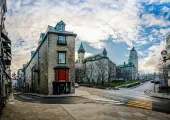Kinkakuji Temple in Kyoto: Simply Breathtaking
Catalogue
- Exploring Kinkakuji
- Best Times to Visit
- Architecture in Kinkakuji Temple
- Shariden Kinkaku
- Sekkatei Teahouse
- Anmintaku Pond
- 3) Shariden Kinkaku: A Typical Zen temple
- The History of Kinkakuji
- Accessing Kinkakuji
- Address & Directions
- Opening Times at Kinkakuji
- Entrance Fee
- Near Kinkakuji
- What to Eat in Kyoto
- Where to Stay in Kyoto
- Traveling Around Kyoto
- The Trains to Kyoto
- Kyoto Subways
- Kyoto Buses
- Kyoto Taxis
- Cycling or Walking in Kyoto
- Keihan Bus Tours in Kyoto
- Skybus Tours in Kyoto
Show More
Kinkakuji currently ranks as one of Kyoto’s most visited temples, alongside the Silver Pavillion or Ginkaku-Ji and the Kiyomizu Dera. The Golden Pavillion or the Kinkaku-Jiwas converted to a Zen Buddhist temple after the death of Shogun Yoshimitsu in 1408. It is also the setting for the novel by Yukio Mishima titled "The Temple of the Golden Pavillion." Your first look at the Kinkakuji is both enthralling and calming. It's sure to exhilarate your senses. Kinkakuji is one of Japan’s most famous and well-known examples of historical architecture and is located in Northwest Kyoto.
Kinkakuji Temple is a favorite of millions and a World Heritage Site. The temple's inner sanctum is, unfortunately, out of bounds for visitors, which can be a source of some disappointment to those who’ve traveled from around the world to glimpse it. But don’t worry, you can take selfies with the Golden Pavilion in the background. Plus, two other temples are within easy walking distance from Kinkakuji, the Waratenjin Shrine and the Hirano Shrine.
Kinkakuji is beautiful throughout the year, but especially so in autumn with the falling red and yellow leaves and when set against the white snows in winter. During the autumn months, the red falling leaves turn the reflection in the pond afire. It's almost as if Kinkakuji is alight awash in flames.
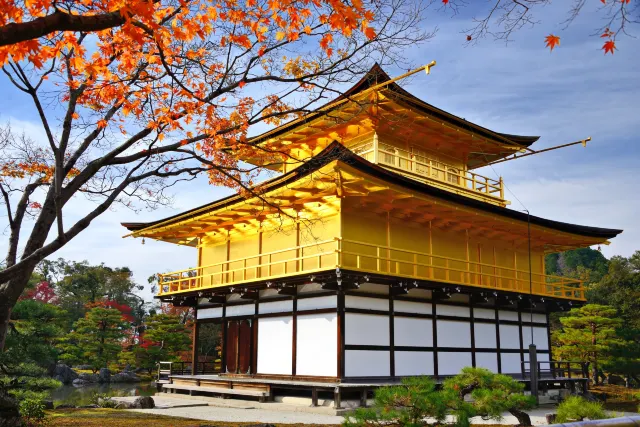
The Golden Pavilion surrounded by tall pine trees and reflected in the calm lake waters is simply breathtaking! If you have luck to visit when Kinkakuji clad in white, it's definitely a once-in-a-lifetime memory.
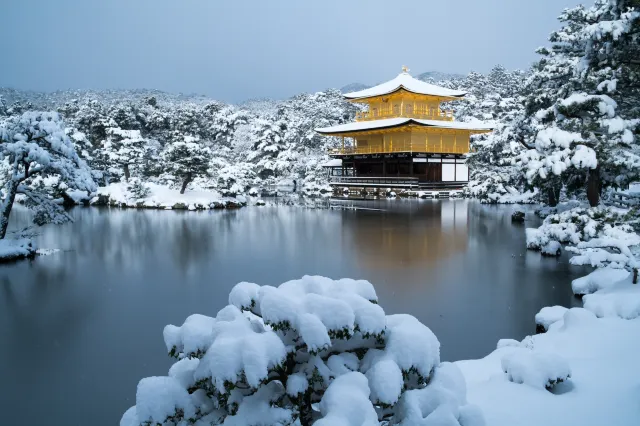
Visitors enter through Somon, the main gate. Then you'll pass through a pathway of maples and pine trees blazing with color and meet the Shariden Kinkaku.
Shariden Kinkaku is built in the Shinden-Zukuri style, and it is only the upper two walls of the 3-floored Kinkakuji that are covered with gold-foil and beautifully set off by the shingled roof on which rests a phoenix bird, made of bronze.
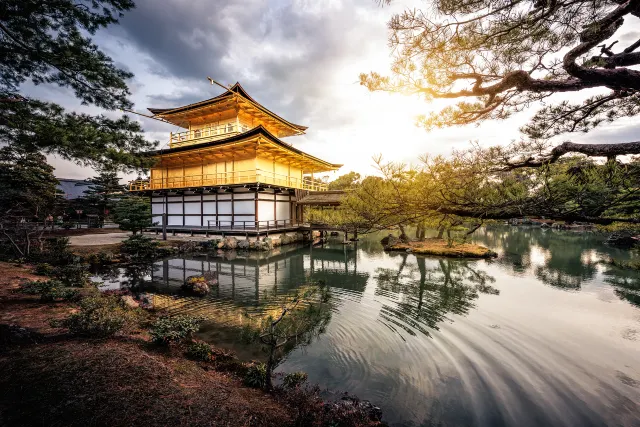
The first floor of Shariden Kinkaku has wooden beams and supporting white walls in the shinden style of the Heian Period. Statues of the Lord Buddha and his follower Yoshimitsu can only be viewed from afar since entry into the temple is prohibited. The upper floors are in the Samurai’s Bukke style and have more artifacts related to Buddhist dharma including the image of Kannon. The third floor of the building is golden both outside and inside, echoing the lavish Kitayama culture of the court’s wealthy aristocrats in Yoshimitsu's times.
The Sekkatei Teahouse in the garden was renovated in 1874, and has an ancient toro or stone lantern, a Muromachi Palace seat, and a basin.
The quaint Anmintaku Pond here is fabled to always have water. There are many small statues and islands which visitors consider lucky. Many visitors observe the tradition of throwing small, centrally punched 5-Yen coins for luck!
The small stone pagoda at the center of the pond is known as the Hakuja-No-Tsuka which is Japanese for a mound dedicated to the white snake’s memory.
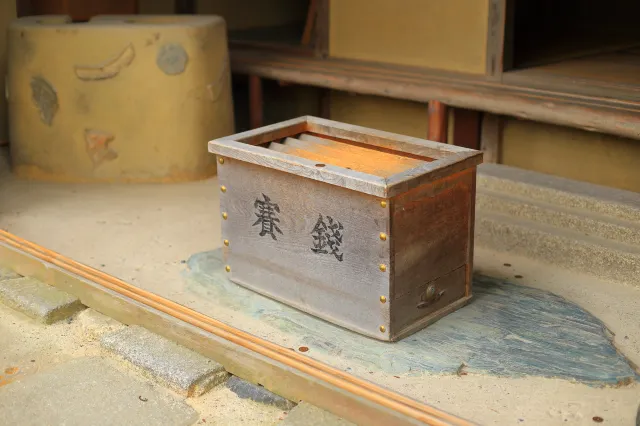
5-Yen tradition: In Japan, many temples, museums, shrines, parks, flea markets, and attractions are free to visit including Yasaka Shrine, Fushimi Inari Taisha Shrine, Heian Jingu Shrine, Arashiyama Bamboo Grove, Ninna-ji Temple, and Kyoto Imperial Palace. However, the 5-yen coins with holes in them are a must at the shrine drop-boxes. Why? Because, the 5-Yen in Japanese is thought to carry good luck in love, business, and relationships.

What is your mental picture of a Zen Buddhist temple? Zen is a type of Mahayana Buddhism. Adherents will often solemnly sit on cushions while engaging in meditation and self-discovery. Zen Buddhists follow the traditional eight-fold path and the four noble truths to achieve enlightenment. They diligently practice methods of mindful meditation and exercise. Kinkakuji is one of the most important temples in the Zen Buddhist tradition.
The current structure dates to 1955. Renovation work was completed after an angry monk burned down the previous building in 1950. A thicker gold-leaf layer was added later in 1987. The arson was a central feature in the plot of the Yukio Mishima’s well-known novel. Today, the wooded areas surrounding the temple are very welcoming and great for walking and meditation.
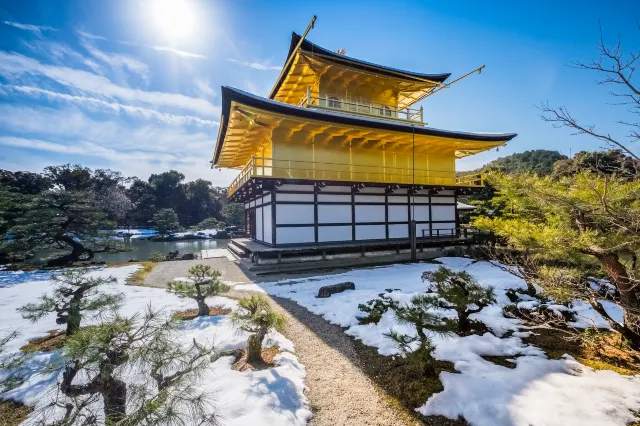
Kinkakuji belongs to the Rinzai Zen’s Shoku-Ji branch founded during the Muromachi period by Muso Soseki, who lived between 1275 and 1371. The original building was constructed in 1397 as a nobleman’s villa for Kintsune Saionji. The second owner was Shogun Ashikaga Yoshimitsu who used it as a residence and retirement home untill his death. Yoshimitsu loved and admired the culture of the Chinese and hence had many such Chinese motifs and symbols incorporated into the design of his villa like the islets of pine trees, the mirror pond in front, and more. As per his will, Yoshimitsu’s son converted the villa into a Zen temple then called Rokuonji. It was later renamed Kinkakuji. During the Ōnin war, the building was destroyed by fire and rebuilt several times.
Tel: 81 75-461-0013
English address: Kinkaku-ji-Cho, Kita-Ku or Kita Ward, Kyoto Prefecture 603-8361. Check out Kinkakuji one the map.
Japenese address: 北区金閣寺町1
Located northwest of downtown Kyoto, Kinkakuji is accessible by bus.
To travel to Kinkakuji you can use bus routes 101 or 205 from Kyoto station, bus route 59 from Downtown Kyoto in Shijo Kawaramachi. The Raku bus routes 101 and 102 from Kyoto Station also stop at Kinkakuji.
It is possible to bicycle to reach Kinkakuji and the nearby Ninnaji and Ryoanji temples.
Kinkakuji is open each day for visitors between 9:00 a.m. and 5:00 p.m.
Expect the temple to be crowded and try to visit early morning or late evening on weekdays.
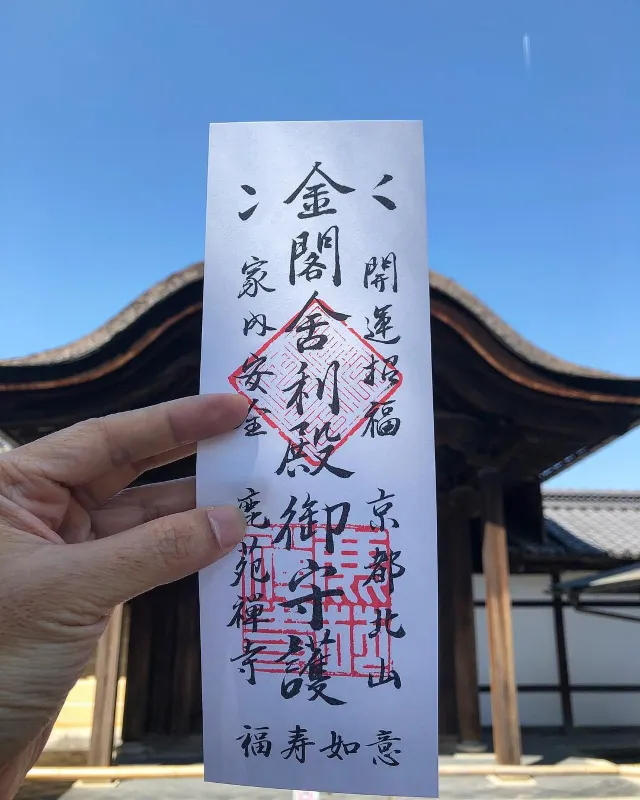
The entrance fee to visit Kinkakuji is 300 yen for children and 400 yen for adults. Be sure to keep your paper ticket as a good luck souvenir.
Kyoto is Japan's former imperial and its cultural, artistic, and historic epicenter. There are over 1,000 temples to explore. Combine your visit to Kinkakuji to include the nearby temples of Toji-in, Ryoanji and Ninna-ji, Kitano Tenmangu, and the Hirano Shrine.
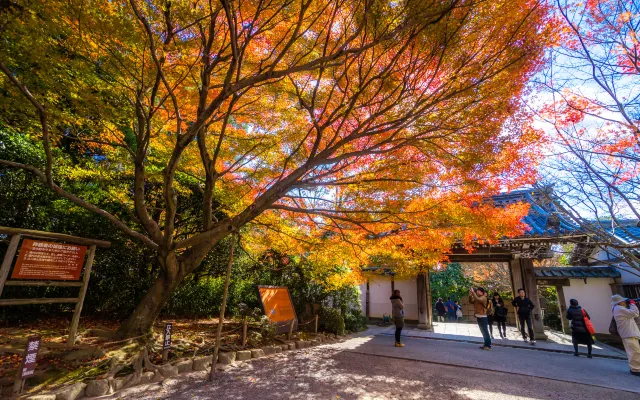
Ritsumeikan University, Insho Domoto Museum, and the Peace Museum are worth a visit. The Heian Shrine, Kiyomizu-Dera temple, Kennin-ji, Nanzen-ji, Tofuku-ji, Tenryu-ji, and Kodai-ji are other Zen Bhuddhist temples well worth a visit when you are in Kyoto, especially if you're interested in learning about the Chinese Rinzai Zen culture, zen gardens, and dry-flower arrangements. Finally, don’t miss the bamboo groves at Arashiyama or the trip to Gion if shopping is your interest.

To know more about Arashiyama: Neighbourhood You Cannot Miss in Kyoto
Take a dip in the nearby sento or a public bath and enjoy your food at one of the several restaurants as you head to Hirano Jinja. Praise and thank the spirits during the Kyoto fire display which is an annual ceremony called Daimonji. Buy some Japanese silk and be enthralled by the singing sands at Kyotango. You can also visit Osaka or other nearby cities.
Find more about Osaka with guides to Universal Studios Japan, 15 Fun Things To Do in Osaka.
Here are some must-try typical Kyoto dishes. Try the boiled tofu called Yudofu, Conger eel or Hamo baked rice bowl with a typical sauce and Japanese pickles at Tsukemono in Nishiki Market. You must try Minoko restaurant in the Gion District for an 11-course Kyo-ryori dinner in a tatami mat room served by kimono-clad waitresses or the lunch sampler featuring bento lacquerware boxes.
To find more restaurants in Kyoto: 10 Must-Try Restaurants
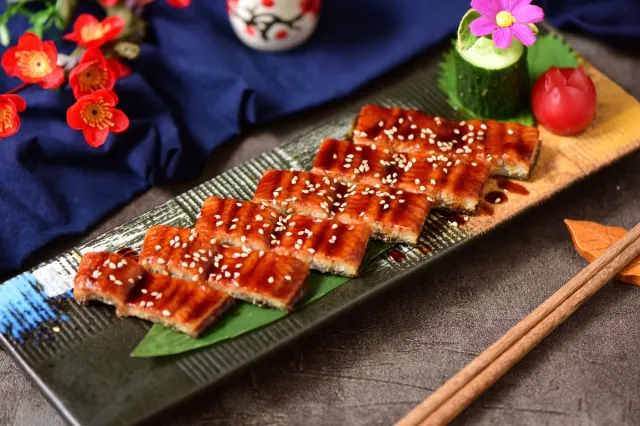
The most accommodative area to stay in Kyoto is always Downtown Kawaramachi for its proximity to transportation and facilities. Kyoto Station is good as a hub if you plan to visit Osaka, Nara or Kansai regions. Other recommended areas to stay in Kyoto are Gion, Kyoto Station, and Central Kyoto.
Other hotels in Kyoto: The Best 15 Ryokan in Kyoto

Hotels near the Kinkakuji include the Sakura Komachi, Kyoyado Yaezakura, and Kyo Koyado Kinkakuji Benten. The Guest House Kyorakuya Kinkakuji is less than a kilometer from the Kinkakuji.
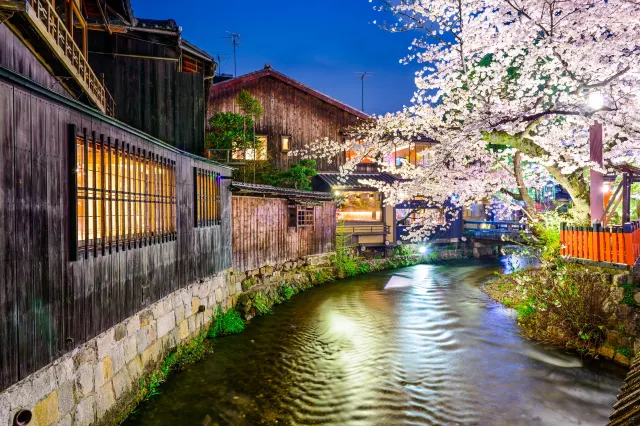
While in Kyoto, jump over to Gion. Visit the flea markets like Tezukuri-Ichi Flea Market, Kobo-san Flea Market, or Tenjin-san Flea Market with their many shrines to discover. Take home souvenirs like ceramics, handicrafts, kimonos, ukiyoe-wood block prints and fashion accessories.
To find more about Gion: A Must-Have Guide to Gion District in Kyoto
Google Maps is a must to help you find the shortest routes and the correct bus. Be prepared to walk quite a bit and wear sensible shoes when you visit the Kinkakuji. Kyoto’s public transport system is extremely fast and good. To get around in Kyoto, you will have access to subways, trains, buses, taxis, and bicycles. Being relatively flat and extremely compact by design, the terrain in Kyoto is excellent for walking and bicycling to the Kinkakuji.
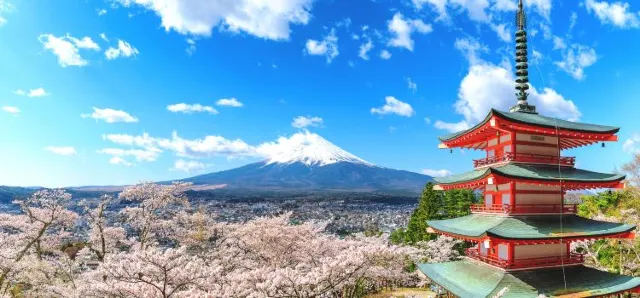
Consider special bus-tickets like the Kyoto City Pass to save money and explore Arashiyama, Downtown, and Higashiyama on foot. If you have to take a taxi, expect the 4-seater versions to charge a 600 yen base rate plus 80 yen per 415 m thereafter.
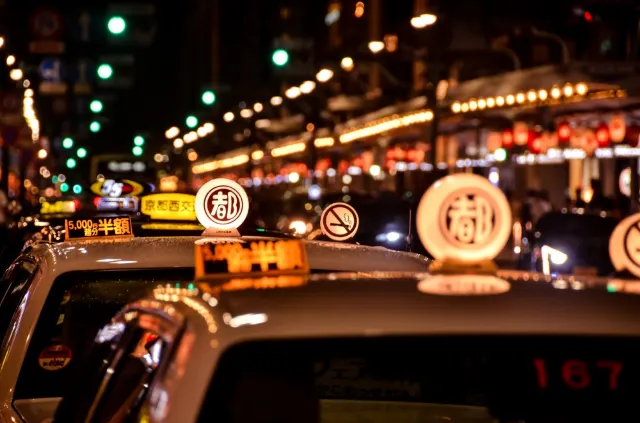
Kyoto has six train lines with some of them being intercity and rapid lines. They can all be used to travel around Kyoto too.
The subways run East to West and North to South and are a very punctual, efficient, and an easy mode of transportation in Kyoto. Look up the JR Pass site for information on the schedules, fares, and more.
Open the Kyoto subway map (English version)
Busses are Kyoto's most extensive public transporation network and quite economical too. However, they are a tad slower than the trains and the subways.
Reasonably priced and available in plenty, taxis can be small with 4-seats or coach type with six-seats. The huge advantage is they are fast, can take you to exact locations if you're in a hurry, and are a boon in areas where public transportation is not frequent or readily available.
Kyoto is excellent for walking and bicycling and is among the most bicycle-friendly cities in the world. The weather is pleasant and most times bicycle rentals are easy to obtain. Higashiyama, Aeashiyama, and Downtown Kyoto are especially good for walkers and joggers. The Keifuku Randen Line is a tramline that passes near the Kinkakuji and through nearby Ryoanji Station. It is slow and tourist-friendly, making it a good way to explore Kinkakuji.

These take the stress out of sightseeing and originate from the bus terminal at Kyoto Station. An onboard guide will explain things in languages like Korean, Chinese, and English. This is an attractive way to see Kyoto's various zen temples. The tour lasts 4h 30m and costs 2240 yen per child or 4670 yen per adult. The tour to Kinkakuji, Ginkakuji Temple, and the Kiyomizudera Temple takes 5h and costs a reasonable 2800 yen per child or 5300 yen per adult.
Special Skybus tours are also available for sightseeing at a more leisurely pace. These tours take 90 minutes and cost 2100 yen per child or 4000 yen per adult. Skybus tours operate double-decker buses with open top levels. Of course, Kinkakuji figures prominently on many Skybus tours.
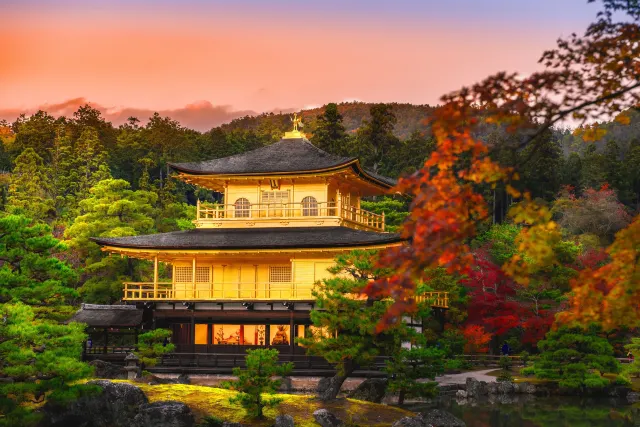
The Kinkakuji Temple is a once-in-a-lifetime experience. We hope you enjoyed this look guide to exploring Kyoto and the best places you should visit the next time you’re exploring this famous Japanese city. Unfortunately, now it is time for us to say “sayonara” and that we hope you’ll explore Kinkakuji with the help of Trip.com.
Trending Travelogues
Popular Trip Moments
Popular Travel Types
Popular Attractions
Popular Destinations
Recommended Attractions at Popular Destinations







Site Operator: Trip.com Travel Singapore Pte. Ltd.
